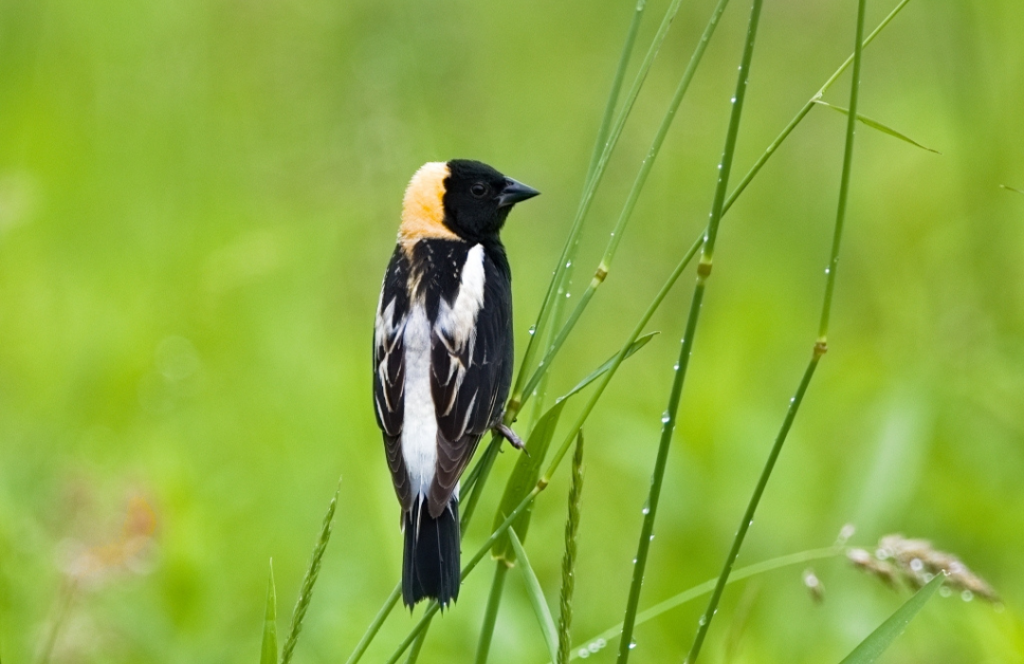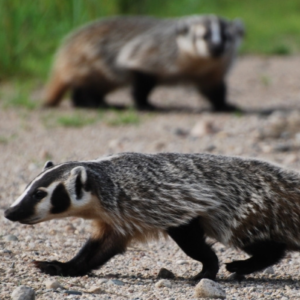
Bobolink Nature Canada
With a name like Bobolink, who would’ve thought their name comes from a poem about their striking appearance? Save endangered species today by joining one of our campaigns! Help End the Extinction
Vital Signs
- Common name: Bobolink
- Latin name: Dolichonyx oryzivorus
- Range: The south of all Canadian provinces
- Lifespan: 2-9 years, average of 5 in the wild
- Size: Wingspan of 27 cm, weighing an average of 25-56g, length of 15-21cm

The Bobolink has a cone-shaped beak and pointed tail feathers. Females are tan in colour with black stripes. Males look similar, except during breeding season, when they’re black with a white back and a yellow nape.
Bobolink Facts
- Name originates from a poem by William Cullen Bryant called Robert of Lincoln
- Oryzivorus (the species name) is Latin for “rice eater” since rice, oat seeds, and other grains make up most of their diet
- Has the longest migration of all North American songbirds, flying 20,000 km from South America to Canada.
- Are polyandrous, meaning that one clutch of eggs can have multiple fathers
- Eggs are colourful, ranging from pale blue to red-brown. They can also have purple spots

Threats
Bobolinks are losing habitat as more land is used for grain and other kinds of crops. Because of this, nests are also at risk. Tractors destroy eggs during mowing, since the nests are made on the ground. Harvesting these crops also destroys eggs, along with causing nests to be abandoned and the accidental deaths of adult birds and hatchlings. Bobolinks are also at risk due to the increased use of pesticides.
What’s Being Done
The Bobolink has been protected under the Migratory Birds Convention Act (1994) and is also protected under multiple provincial Wildlife Acts. At regional levels, Bobolinks are threatened and under monitoring projects such as the North American Breeding Bird Survey, Ontario Breeding Bird Atlas, and Éudes des Populations des Oiseaux du Québec.
Recovery goals in Ontario include enhancing and maintaining the Bobolink’s habitat, as well as working with landowners in the Bobolink’s range.

Canada has committed to the goal of protecting 30% of lands, ocean, and freshwater in Canada by 2030. This goal will help protect ecosystems, restore habitats, and fight climate change. All these things are a step in protecting Canada’s at-risk animals—so let’s hold the federal government to their promise.
How to Help
- Volunteer: Participating in bird surveys and sightings is a great way to help conservation groups to map out where the species are located.
- Stay Informed: Read our bird friendly city page to see how you can help birds in your area.
- Sign Up: Join conservation campaigns and continue spreading awareness. Check out the events Nature Canada has based solely on raising awareness about birds here.
- Learn: Stay informed about endangered species by signing up for Nature Canada’s monthly e-newsletter.
- Find out more: Help us end the extinction by taking action for nature today—visit conservation websites like Nature Canada or join one of our campaigns!
Resources
- The Cornell Labs – All About Birds: The Bobolink
- COSEWIC – Assessment and Status Report
- Ontario – Bobolink
- SARA – Species Profile
Want to Help?
Hello nature life wilderness is the world’s envy. It’s our duty to keep our true north strong and green.
Donate

